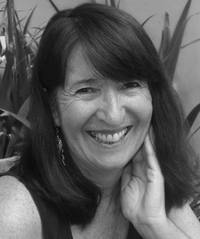
A few years ago for my birthday, my partner Angie gave me a coffee grinder and a copy of Maureen Seaton’s memoir, Sex Talks to Girls. By this time, I was already an avid coffee drinker and also an avid reader of Seaton’s poems. Neither habit seemed likely to diminish, but perhaps Angie imagined there was room for these habits to grow, to expand. As with most other things, she was right.
When I began to grind the beans myself, my half-conscious preparation of morning coffee evolved into something resembling a ritual. I took new care with the process, and if I hadn’t been fully awake before, the sound of the grinder jolted me to a fuller—one might even say a poetic—state of awareness. Now I never appreciate a cup of coffee as much as when I have seen it through from a bag of promising beans to a full pot of dark, steaming liquid.
Reading Sex Talks to Girls likewise jolted me to a fuller state of awareness. I had long cherished Seaton’s poems for their formal innovation, lexical range, and thematic depth. I loved the collaborative projects and the solo acts, the narrative, linear verses and the prose poems that leapt from the page like they were spring-loaded. One of my favorites, “Lorraine Hansberry’s Grave,” contained a phrase that ricocheted through my mind at least once a day thereafter: “her body aslosh with joy.”
I poured some coffee and opened Sex Talks to Girls. At once, I was transported to another place and time—to the year of my birth, in fact—a pleasing coincidence. There was no acclimation period for such prose. The experience of entering Maureen Seaton’s memoir was akin to full immersion, plunging into a swimming pool instead of descending a ladder rung by rung:
There I am on the floor of my boyfriend Danny’s apartment circa 1979, Ossining, New York, three years after I quit drinking, a few months after my husband left me for someone more Wall Street, and probably at the spectacular height of a snowstorm.
I was swept away with the feisty zeitgeist, the narrative “I” that saw differently, and more kaleidoscopically, than any other “I” I knew:
I was hilariously tipsy in the middle of someone’s living room, dancing to the Rolling Stones or the Temptations, when I suddenly realized no one was dancing but me. I looked around at the ten or twelve couples who were sitting there watching me. They seemed mythical and distorted, like John Cheever characters at a carnival, and I knew.
She knew. I knew.
There were so many things Maureen Seaton knew, and I wanted to know those things, too.
In November 2012, I met Maureen for the first time at Giorgio’s Bakery & Bistro in Hollywood, Florida. I was jittery when I arrived—a poet-turned-memoirist myself, eager to meet my hero of hybrid forms, my mentor of the multi-genre literary arts. I’m sure I asked too many questions. I’m sure I drank too much coffee. I recall Maureen’s candor, her kindness, her self-possession. Most of all, I recall her uncanny ability to stop time with a conversation.
I think we talked for close to three hours. I know I hoped it was a conversation that would resume often, for many years to come. When I left the restaurant, I’m certain that I was “aslosh with joy.”
***
The Rumpus: In 2008, when I was a new student in a Humanities Ph.D. program, I chose a course of study in “aesthetics and creativity.” For one of my first creativity studies seminars, I was asked to make a list of contemporary figures working in a range of disciplines who I considered “exemplary creators,” or more simply put, people who I regarded as exceptionally creative. And I thought of you, Maureen Seaton. I never imagined I would have the opportunity to meet you in person, let alone read and collaborate with you here in south Florida, and I certainly never imagined I would have the chance to ask you some of my questions. Thank you for your willingness to share your thoughts and insights with me.
Maybe the best way to begin, then, is by asking you who some of the exemplary creators in your own life have been. Whose creativity has inspired you most when you think about your history as a writer, teacher, mother, and mentor?
Maureen Seaton: Julie, I would love to have you as a sidekick in any course in “aesthetics and creativity.” You’d throw out a word—plums!—and we’d dive into every art material imaginable, plus a closet of costumes, oh, and video gear, and, of course, there’d be butcher paper lining the walls. And we’d be off—the way the mind leaps into flames as if it’s been waiting forever for someone to light the match.
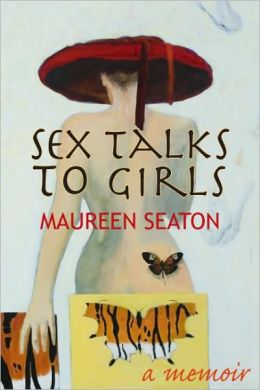 I’m not sure where I learned that the creative impulse is accessible. Or, better yet, that it’s contagious. Not sure when I decided we all have it and that the wisest thing I could do for myself and my kids—and, eventually, for my students—was to trust that the impulse is in everyone. And that believing that about people is often all I need to do—whether writing, teaching, mothering, mentoring. It’s an optimistic worldview, I realize, maybe even old-school “progressive,” and I have no idea where I learned it, but there it is.
I’m not sure where I learned that the creative impulse is accessible. Or, better yet, that it’s contagious. Not sure when I decided we all have it and that the wisest thing I could do for myself and my kids—and, eventually, for my students—was to trust that the impulse is in everyone. And that believing that about people is often all I need to do—whether writing, teaching, mothering, mentoring. It’s an optimistic worldview, I realize, maybe even old-school “progressive,” and I have no idea where I learned it, but there it is.
I went through high school and two-and-a-half years of college with all women—that seems significant—and it was during the ‘60s. (I had a history professor who was against the war in Vietnam, which, at the time, was pretty creative.) Then I learned creativity from my daughters, and from Sendak, himself (speaking of The Rumpus). Later: Toni Morrison, Alice Walker, García Márquez. Later still: Whitman, Stein, Ginsberg, Lorde. Finally, along came my incredible collaborators to lead me down the path to “everything’s possible”: Denise Duhamel, Neil de la Flor, Kristine Snodgrass, cin salach, Niki Nolin, Samuel Ace, Mia Leonin.
The list of exemplary creators in my life is exhausting. How about if I just say I started trusting in my ability to create my own life in my late twenties with the birth of my second child and a few other serendipitous events? Somehow I wrote something in that time that resembled a poem. The match was lit.
Rumpus: Do you recall the first poem you wrote that “resembled a poem”? Is it a poem you later published that we, as your readers, would know?
Seaton: In the early ‘80s, I thought I might try writing short stories to bring in some income for me and my kids, anticipating the birth of the now time-worn “LOL.” Instead, my “stories” came out all wrong, not only as what we might call “flash nonfiction” today, but also as what we might have called then and would still call now, “poetic.” But they weren’t recognizable as poems to me, who had gotten as far as Eliot, then quit college to get married, never to realize there was actually such a thing as a living poet. I love to hear you talk about this, Julie—your excitement when you realized poems were still being made in your lifetime. I was terrified, however. I really needed to think fast about how to make some money as a single mom.
I vaguely remember that first piece (I’d shown it to a friend who told me: “That’s a poem”), how it floated in the silence as I stared down at it. It’s nowhere to be found and I’m sure that’s as it should be.
Rumpus: So often when I identify myself as a poet in the company of those who don’t write or teach literature, I receive startled reactions. People point out that “you can’t make a living as a poet,” and yet I can’t imagine myself living if I weren’t a poet. I can’t imagine who or what else I would be without poetry. This leads me to wonder what being a poet means to you. How has coming to know yourself as a poet informed your worldview, your values, your interactions with others?
Seaton: I uncovered most of my major “identities” by the time I hit forty (at least I think I did—who knows; the best thing about identifying as queer is that I invariably exhibit fluidity), and several identities have taken years, even decades, to fully accept and integrate. But “poet” was the one I railed against for the briefest time (once I realized I was, indeed, “doomed”), because it was so much damn fun. I did worry a lot about money at first, especially with two little ones and no degree and my ex-family harassing me to work on Wall Street. Can you imagine? But I found what jobs I could kind of handle: secretary, waitress, adjunct. At night I wrote. I wrote like a madwoman. As Alice Walker suggests: I saved my life.
Knowing myself as a poet has informed everything. Every single thing. And it’s mine. I think it was twisted into my DNA before birth. I didn’t know it fully until I was almost thirty, at least head on—and before that I knew it by the way I was self-destructing trying to avoid it. It’s helped explain me to me, and teaching as many poets as I have now, I know I’m not the only one who loves the universe as I see it in all its raging beauty. Borges calls it “that particular tingling of poetry.” There are as many definitions for “poet” as there are poets. Maybe. Maybe a poet is simply, like any artist, someone who values time more than money.
Rumpus: I’m glad you mentioned queer identity! There is so much discussion and debate that I’m aware of and even a part of—some of it useful, some of it not—concerning the relationship between identity and aesthetics and between aesthetics and activism. Your book, Furious Cooking, won the Lambda Literary Award for Lesbian Poetry, and your book, Venus Examines Her Breast, received the Publisher’s Triangle Audre Lorde Award for Lesbian Poetry. Do you think there is such a thing as a “lesbian poem”? What about a “queer poem”? How are/might they be different? And, if I may be so bold—what do you think is the queerest poem you’ve ever written?
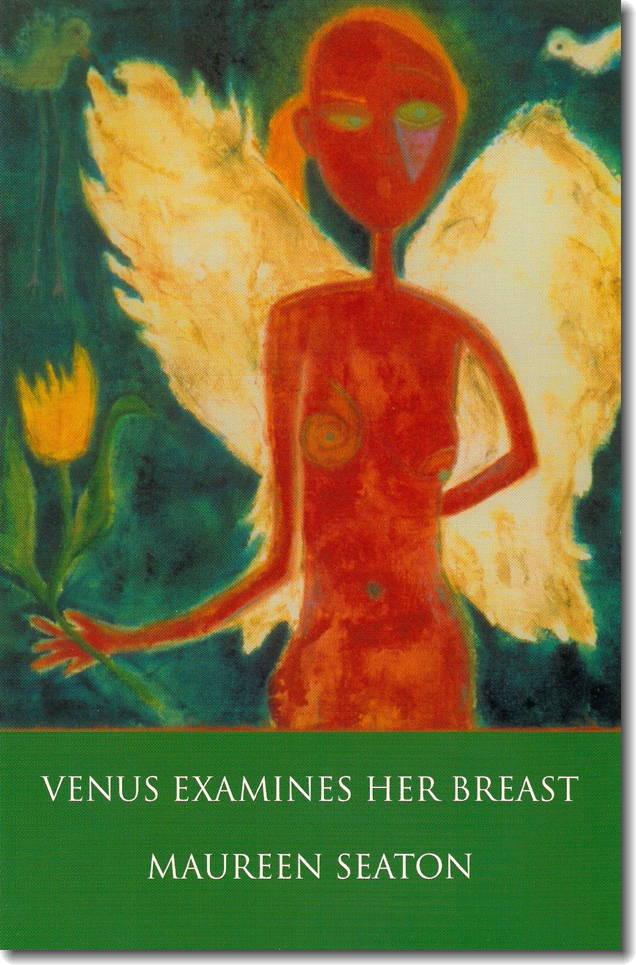 Seaton: I believe I started writing queerly when I veered into collage—piecing a poem together from smaller parts rather than building it line by line or image by image—and found myself courting the nonlinear. I was worried about the leaps between sections in these new pieces. I’d never thought about or even heard of the joys of parataxis, never read Duncan; even the word postmodern was a decade away from my consciousness. But while I was a young mom with bites of time in which to write, I wanted to do something with the results, so I’d type them all up, cut them out, and move them around on the table until I was happy with the associations.
Seaton: I believe I started writing queerly when I veered into collage—piecing a poem together from smaller parts rather than building it line by line or image by image—and found myself courting the nonlinear. I was worried about the leaps between sections in these new pieces. I’d never thought about or even heard of the joys of parataxis, never read Duncan; even the word postmodern was a decade away from my consciousness. But while I was a young mom with bites of time in which to write, I wanted to do something with the results, so I’d type them all up, cut them out, and move them around on the table until I was happy with the associations.
Queer to me means pushing against boundaries, disregarding them. It’s taking the idea of poetic license to the nth, both in poetry and in identity. My collage impulse grew at the same time I was questioning my hetero self. A couple of years ago I wrote this in an essay: “My first mentor told me: ‘Poetry is about compression, Maureen,’ and that worked for me until I tongue-kissed a woman.” I think the “queerest” poem I ever wrote was that first one, the one that’s missing, because I wanted it to be a story and it transformed itself into a poem. And I think most poems and poets are queer. And as far as a lesbian poem goes, it should be yummy.
Rumpus: One of the first poems of yours that I remember reading and rereading is “Mortal Sins,” from that surreptitiously “straight” collection, The Sea among the Cupboards. This poem rang all my chimes and set off some bells and whistles, too. First, it’s a coming-of-age, my favorite form of any genre. The reader glimpses our speaker in representative moments from her life, catalogued by ages:
I’m fifteen.
I love his pathos, his acne,
His yellow-stained fingers.
JFK dies during study hall. […]At sixteen my face falls into place
around my nose. […]I’m seventeen:
long hair, brace-less teeth.
I worship Kevin Duffy, boast
his fraternity pin
on my Peter Pan collar. […]
I didn’t know when I read this poem—or at least I didn’t fully believe—that a poem could be funny. But I found myself laughing out loud:
I’m thirty-one:
The year of designer jeans.
My ass is finally “in.”
I also didn’t realize when I read this poem that poets could braid the spiritual and the secular together. I thought you had to choose one or the other—funny or serious, spiritual or secular. Maybe your “straight” poem was already queerer than you knew, pushing and crossing all kinds of boundaries!
Father Reilly says: “Watch out! Holding hands
is a venial that could easily lead
to a mortal.”
Kevin drops me for a “Popover Girl” from Patricia Murphy’s
who giggles whenever a car with one headlight
passes by.
Do you consider yourself a spiritual poet, a comic poet? Both? Neither? How would you describe your style if a stranger on a bus—let’s make it a subway—asked, “So what kind of poems do you write?” And—what can you do in a poem now that you didn’t know you could do then, back when you wrote “Mortal Sins”?
Seaton: Maybe my first collection was more a surreptitiously “queer” collection, come to think of it, no? I was certainly moving away from straight all through my thirties while writing it. But, you know, I have two “gender memories” from my daily bus rides to and from the local high schools: one of the infamous Aldo of “Mortal Sins” and one of a junior from my all-girls’ school named Monica. I just put her on a back burner for about twenty years.
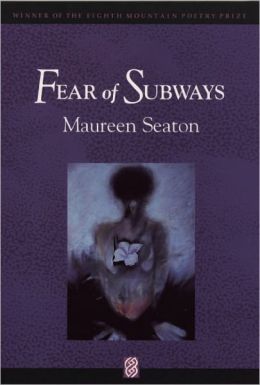 I’ve never considered myself either a spiritual or a comic poet, Julie. You’re the only one who’s ever used the word spiritual in regards to my poetry. And some have told me there’s humor in my work, it’s true, but I guess it’s more of a humming kind of humor than a guffaw kind, and I’m not conscious of doing it. I do see the world in terms of both the spirit and the hilarious at times, though. And laughing at self seems to be a good spiritual path to follow, so maybe that comes out in my poems? I have written a bit about religion: Catholicism’s blind spots, mostly. Speaking of which, what about that Pope Francis announcing that the church will fall if it doesn’t love gay people? (Very paraphrased.) The name Francis (my father and paternal grandparents were named Francis/Frances) is a good name, and Jesuits can be pretty smart, so we’ll see how this pans out. Oh, and he said something about needing “feminine genius” in the Church, too. Not ordaining us, but listening to us better. Too little too late?
I’ve never considered myself either a spiritual or a comic poet, Julie. You’re the only one who’s ever used the word spiritual in regards to my poetry. And some have told me there’s humor in my work, it’s true, but I guess it’s more of a humming kind of humor than a guffaw kind, and I’m not conscious of doing it. I do see the world in terms of both the spirit and the hilarious at times, though. And laughing at self seems to be a good spiritual path to follow, so maybe that comes out in my poems? I have written a bit about religion: Catholicism’s blind spots, mostly. Speaking of which, what about that Pope Francis announcing that the church will fall if it doesn’t love gay people? (Very paraphrased.) The name Francis (my father and paternal grandparents were named Francis/Frances) is a good name, and Jesuits can be pretty smart, so we’ll see how this pans out. Oh, and he said something about needing “feminine genius” in the Church, too. Not ordaining us, but listening to us better. Too little too late?
If someone asked me on the subway (New York) what kind of poems I write I’d probably say, “Who wants to know?” And back when I wrote “Mortal Sins” I didn’t know I could extend the line, and I didn’t know I could collaborate, I didn’t know I could not make sense, and I didn’t know I could push into language so far it would run wild across the page and leave me behind. What about you?
Rumpus: Well, growing up I had the audacity to claim I was a poet years before I started writing any poems. I wrote prose that seemed “poetic” to me because I was invested in particularly close attention to sound and image. Blake’s words were my credo: “To see a World in a Grain of Sand.” And speaking of credos, I have to ask what words from other writers you hear in your head as you write or reflect on what you’ve written, or on what you want to write. Maybe they’re not even words from other writers. For instance, I notice at the bottom of the very last page of Fibonacci Batman this isolated epigraph, almost like an Easter egg on a DVD: “There is a time to laugh and a time not to laugh, and this is not one of them”—which of course made me howl with laughter! The quote is attributed to Inspector Jacques Clouseau. What is Clouseau doing here? Please tell!
Seaton: Clouseau was a favorite of my father, who died right before my chapbook, America Loves Carney, came out in 2009 with previously uncollected poems about my family. I’d really wanted him to see that little book because the poems were more accessible and he would have liked the one about his parents (Francis and Frances). Then I ended Fibonacci Batman with America Loves Carney, and it just seemed right to add the Clouseau quote as an afterward.
When I was growing up I kept a diary and wrote occasional poems and a novel (about pirates). I played a bunch of instruments and drew constantly. None of this was a viable career option for me as I moved into young adulthood, but when I woke up later on it was poetry that was waiting for me.
A credo question is another one of those dangerous ones with possible long lists to follow. So I’ll just go to Audre Lorde’s essay, “Uses of the Erotic,” which is at the very top of my list of credos, and this quote, which has guided my writing and guides me still: “But when we begin to live from within outward, in touch with the power of the erotic within ourselves, and allowing that power to inform and illuminate our actions upon the world around us, then we begin to be responsible to ourselves in the deepest sense.” On some level, this is what I hear when I write.
Rumpus: I am so happy you mention Audre Lorde, Maureen, as she has been a pivotal figure in my own writing life, and in my queer and feminist life as well! Lorde is also an exemplary model of multi-genre writing. Her poems, her speeches, and of course her memoirs, from Zami: A New Spelling of My Name to The Cancer Journals, seem to transcend traditional boundaries between, among many other things, poetry and prose. And this brings me to your memoir, Sex Talks to Girls, published by the University of Wisconsin Press in 2008 and winner of the Lambda Literary Award for Lesbian Memoir. In the acknowledgments for the book, you note, “As a practicing poet I actually had little hope of writing past page 3.” But you did write past page three—all the way to page 199, in fact—and I wonder if you could talk a bit about your decision to write a memoir in prose and about how the work of a practicing prose writer differed/differs from your experience as a practicing poet. What were the surprises? Would you—will you—do it again?
Seaton: If the impulse to write a memoir comes my way again, Julie, I’ll jump on it. Or into it. Sex Talks to Girls was one of the most delicious writing experiences I’ve ever had. The easy flow of it, the startling physics of it, holding something so large in my mind I had to stretch to accommodate the poetry of it. But it was the fruit of a specific time that was, let’s just say, painful. Plus, I was heading toward a milestone—my thirtieth sober birthday—and I wanted to capsulize that for my daughters, give them something they could refer to—my truth.
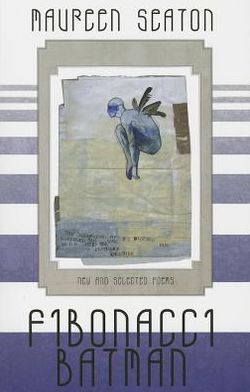 Then there was this: people who would never consider reading poetry, any poetry, have read Sex Talks to Girls. That’s seductive to me, but only mildly so. There was a moment before its publication when I actually had an agent wanting the book. Then a few of her cronies said it was too poetic for the commercial market. Which all turned out for the good, the wonderful, in fact, because working with the folks at the University of Wisconsin Press has been an incredible gift.
Then there was this: people who would never consider reading poetry, any poetry, have read Sex Talks to Girls. That’s seductive to me, but only mildly so. There was a moment before its publication when I actually had an agent wanting the book. Then a few of her cronies said it was too poetic for the commercial market. Which all turned out for the good, the wonderful, in fact, because working with the folks at the University of Wisconsin Press has been an incredible gift.
Like you, Julie, I’m a poet underneath everything else. But I really enjoyed the larger canvas of the memoir. “I felt as though I had switched from a single reed instrument to a full orchestra.” (Annie Dillard, “To Fashion a Text”). Oh! Which brings me to collaboration—want to go there now? What is one way a solitary poet might duplicate the feeling of a full orchestra, or at least a small band? I know it’s like apples and oranges, or violins and bassoons—seemingly different impulses and strategies—but I love complexity and I love polyphony, alone or with others. Does that make sense?
Rumpus: In a word, yes! It makes tremendous sense to me, as both a memoirist and a burgeoning collaborationist—that longing for complexity and/through polyphony. When I read Sex Talks to Girls, although it is a very unique account of a wholly individual person—I have never encountered anyone quite like you, Maureen, on the page or in the world, and I mean that as the highest form of praise—I was immediately put in mind of two of my favorite books, both organized around small, vivid vignettes and both quite obviously, at least to my mind, “poetic” texts: Sandra Cisneros’s autobiographical fiction, The House on Mango Street, and Jean Toomer’s novella of the Harlem Renaissance, Cane. Before we move on to your collaborative volumes, could you share a bit about the approach you chose to conducting the symphony/small band of your memoir? How do your chapters differ from prose poems? Do they? Were there any specific texts you looked to for guidance and inspiration as you assembled this poetic memoir?
Seaton: The only approach I can recall for the memoir was one designed to give myself time to write. I started it in New Mexico in the summer of 2006, worked on it in Michigan for a week or two, then back in Florida that fall. The way it composed itself was a great joy to me. Since I wasn’t out to write a publishable volume, simply something to give to my kids, I didn’t think about the outcome. It was astonishing watching it happen.
And I definitely felt as if I were composing a narrative, that I’d found a well I didn’t know existed right next to my lyric well of poetry. I can see now why it might seem like a series of prose poems to some readers, but it didn’t to me then and it still doesn’t. It was a new impulse. If anything, it had a hybrid-y feel for me. I mentioned it to my friend and colleague Manette Ansay, and she asked to read it, then told me it was a real book and I should publish it. I hadn’t looked at any other texts for inspiration because I wasn’t writing a text. I stopped when the well went dry. (Or did it?)
Rumpus: You’ve mentioned the lyrical well and the narrative well, and I want to ask you about another well that I think we’ve both been itching to talk about since the beginning of this interview—the collaborative well. The first book of yours I ever read was a brilliant, explosive—I might go right out on the ledge and say—life-changing collection called Exquisite Politics, co-authored with Denise Duhamel in 1997—the year I graduated from high school. (If only I had read the book then!) Your poetry collaboration with Denise led me to your single-author poetry volumes, which ultimately led me to your memoir. Collaboration was my first exposure to your creativity, and it’s what got me hooked!
How did you first come upon—seize or stumble upon—the idea of writing poetry with a partner? Did this feel daring to you? Natural? Both? Neither? And what have you learned from collaborating with the many excellent poets you mentioned earlier—about poetry, about yourself, about the creative impulse?
Seaton: Odd thing about those wells, Julie—the narrative and the lyrical. For me, they seem to be located in the body. There’s an internal sense about them, like going down into a fractal toward infinity—I can sense the depth, the gravity—and I have to reach in for them—that mining so many writers write about. But when it comes to the collaborative impulse, for me, the words don’t present themselves in a well—it’s more like they’re all around me (sometimes zooming, sometimes loitering or teasing), and I reach out and pull them onto the paper or screen. They’re air sprites. Come to think of it, whenever I write in a group (band or orchestra), even if it’s not specifically for the purposes of collaborating, that’s where the words come from: thin air! I’ve never realized the difference before.
Denise asked me in the late ‘80’s if I’d like to collaborate because she’d heard David Trinidad read some poems with Bob Flanagan in Manhattan. She said they were “wacky, dynamic, and non-linear.” I did! She lived on the Lower East Side and I lived in the Bronx—a two fare trip—so we decided to leave lines on our answering machines. We went back and forth, one line at a time that turned into the couplets of “Ecofeminism in the Year 2000.” I’ve told that story over and over, and it always makes me grin to remember how excited we were about that poem and our discovery of a whole new trove of poems waiting for us. It felt extremely daring and extremely natural. We didn’t know anyone at the time besides David and Bob who was into collaboration, and we were shocked to find out years later (when we co-edited Saints of Hysteria with David) that poets had been doing the deed forever and, for the most past, not getting much recognition for it. The editor of one journal we sent our early work to wrote back that collaborative poetry was an oxymoron. (And he didn’t mean it in a good way, either.)
I’ve learned, through working with artists and poets, writing with my students in class, observing the results when my students collaborate with one another—that a fractal expands outward when two people breathe on it together. I’ve also learned that collaboration sparks fresh language in a way that delights and restores. The collaborative impulse is so alive in the world of poetry right now that it no longer feels as anomalous as it did when Denise and I first began. I don’t think it will ever completely assimilate, however—I sure hope not. It’s simply too capricious. Too much fun. Too hot-blooded. Too queer!




